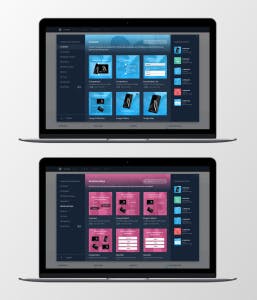Game Based Elearning

In the last decade the bulk of corporate organizations have understood the worth of game-based learning or gamification in learning and development (L&D).
What is game based learning?
Gamification became so popular due to the fact that it allows organizations to develop skills and knowledge in their employees in an engaging manner with the help of game elements. However, eLearning designers at certain organizations get too carried away with the engagement aspect of gamification, and forget the fact that the mastery of skills and knowledge is the ultimate goal here, and the engagement aspect is just to hold the learner’s attention while the transfer of knowledge and skills takes place.
Game-based learning does not mean turning digital learning courses into games, it simply means using game elements in the courses to make learning entertaining.
In this article, we discuss 5 tips that will help eLearning developers and designers understand how to best provide game-based or gamified learning in their organization.
1. Do Not Immediately Start Off With The Game-Based Learning
This is a common mistake eLearning designers make. Never start off the learners with game-based learning. If you do, they’ll treat it exactly like a game. Instead provide them enough information to remind them that they’re here to learn, and not play a game. This way they’ll be better equipped to learn, while being engaged with the game-elements in the course. You can start-off with short microlearning video, say for example, if the gamified course is about safety training, a short explainer video highlighting the need for safety training, and what learners should expect in the gamified course. This will enhance the gamified learning experience, providing more value to learners instead of distracting them from learning.
2. Provide Proper Context Throughout The Gamified Course
Starting learners off with appropriate knowledge is important and necessary, however, it is not enough. The environment the eLearning designers and developers create in the gamified course should simulate the actual work environment in order to provide them with a physical as well as an emotional connection with what they’re learning in the gamified course. It also makes it easier for them to apply the learned skills in the workplace, transferring knowledge from the simulated environment of the gamified course to the real world. However, make sure you don’t create an overly graphically-rich environment or insert too many elements, as it may confuse the learners.
3. Balance Learning and Entertainment with your game based learning platform
As mentioned right at the start, the purpose of gamified learning is to engage learners while maximizing learning. In order to do that, eLearning developers must know how to balance learning and entertainment just right. This means that the game-elements in the course should be enough to hold the learner’s attention, but not enough to distract them from learning the skills they’re supposed to learn. For example, you create a game-based course for factory workers where putting boxes in trucks get them points. However, you should incorporate real-life ways of getting more work done easily and building more points, like using proper machinery, wearing safety gear, keeping good terms with other workers etc. This way the course keeps reminding the learners that they’re learning too, and that these skills can be applied in the real world, and that this is not just a game they’re playing for entertainment.
4. Give Proper In-Game Feedback with your game based learning platform
Feedback is very important if you’re going to work with gamified courses. It is a critical gaming element that keeps learners coming back for more. We’re talking about immediate and continuous feedback, through a number of elements such as:
- Points, which is how learners can tell that they’re doing what they’re supposed to do.
- Rewards, which are offered when the learner does something worthwhile or extraordinary in the gamified course.
- Powerups, which can be picked up during gameplay, which eggs the learners to explore the game’s environment.
- Deductions or Powerdowns. which is a way to penalize learners when they do something wrong, to help learners understand their errors and mistakes.
Following the above-mentioned tips will ensure that learning and entertainment are properly balanced, and that your employees/learners develop their skills and knowledge to the maximum while staying engaged.
Game based Learning Platform
EdApp provides learning material with a gamified twist, providing users with the opportunity to collaborate and participate in competitions against peers and colleagues.

Learn more about how to use the best game based learning platform!
If you’d like to know more about how EdApp’s mobile learning platform can help your internal training practices, get in touch at enquiries@edapp.com. You can also try EdApp’s Mobile LMS and authoring tool for free by signing up here.
Author
Guest Author Daniel Brown
Daniel Brown is a senior technical editor and writer that has worked in the education and technology sectors for two decades. Their background experience includes curriculum development and course book creation.
